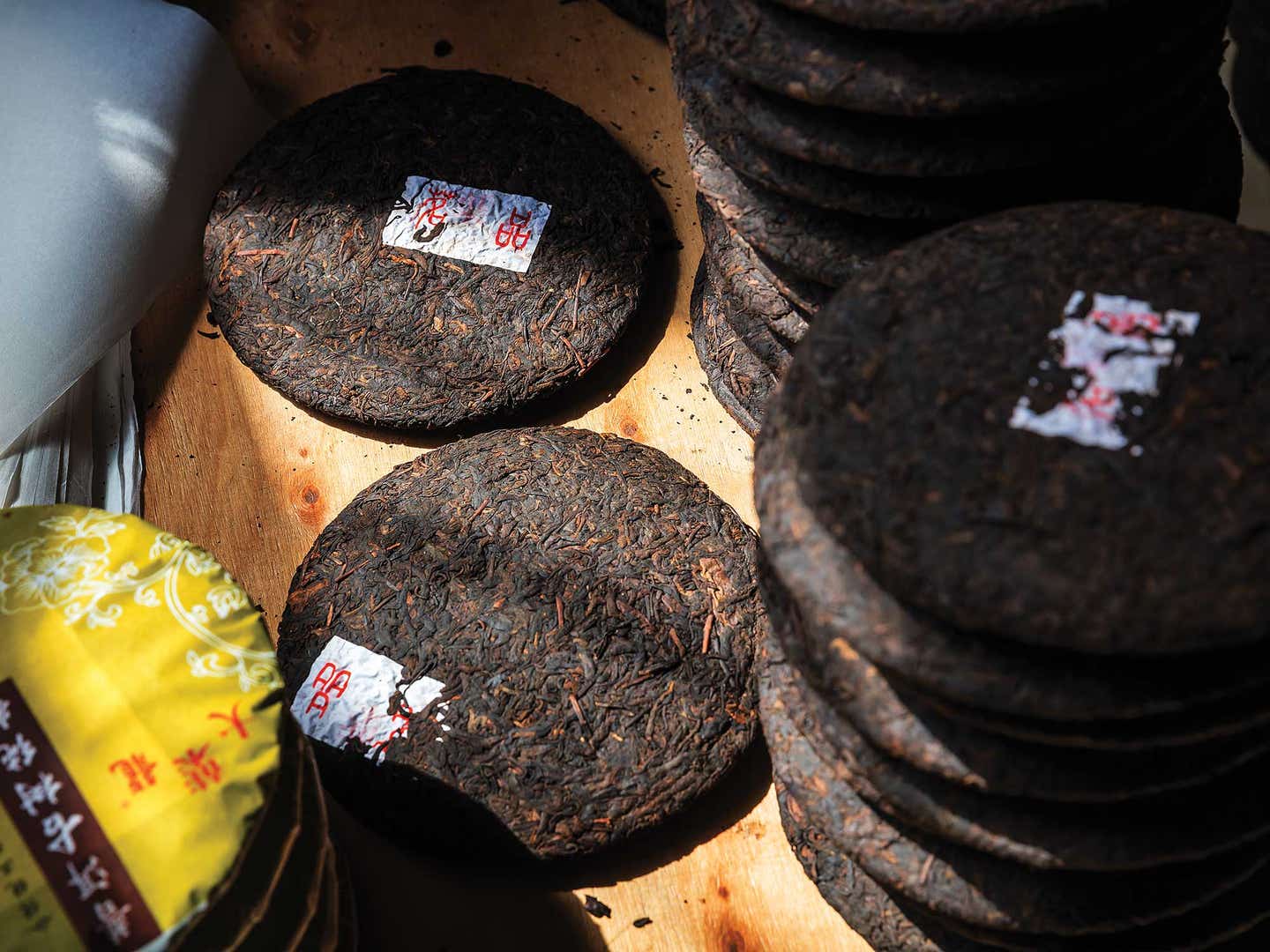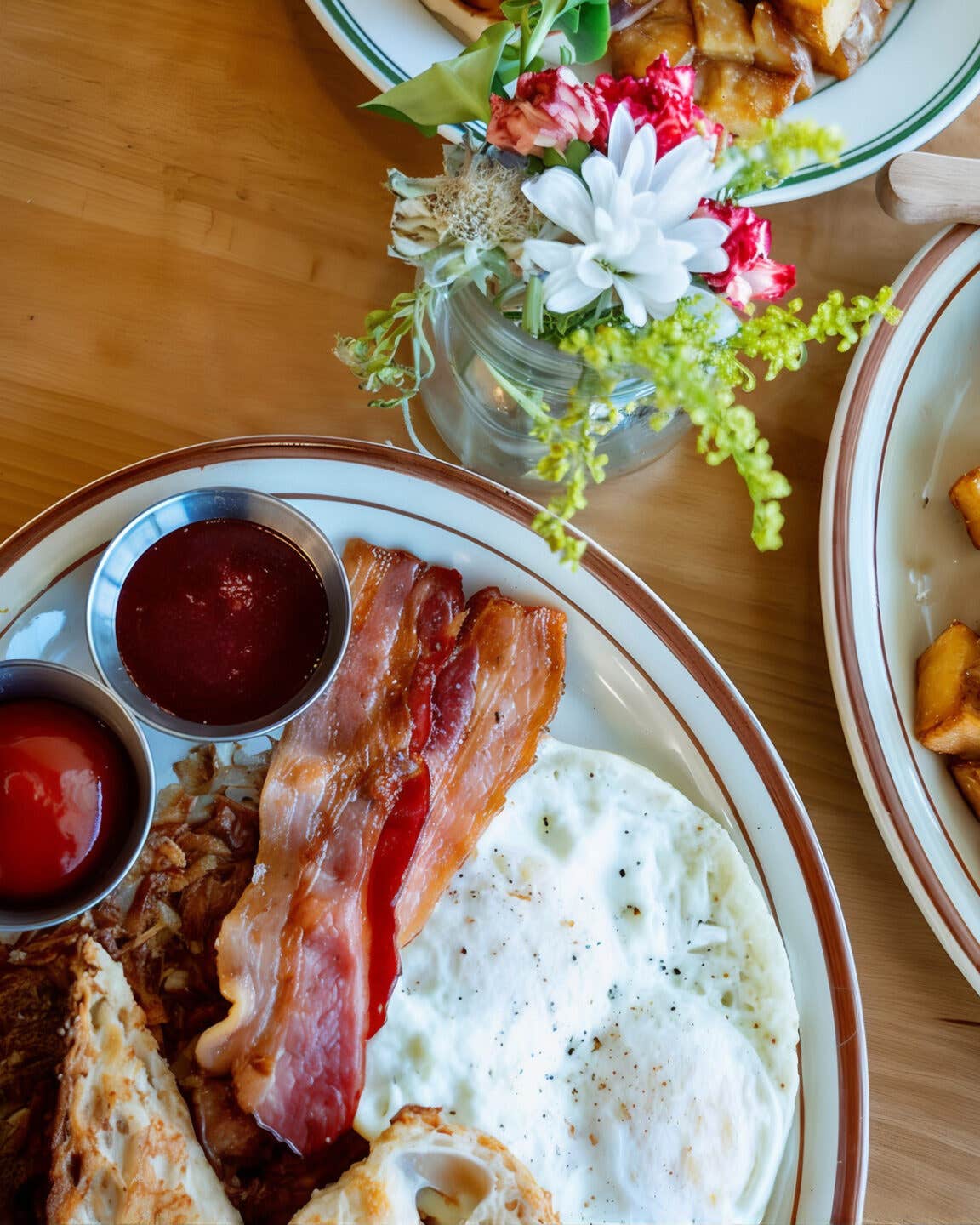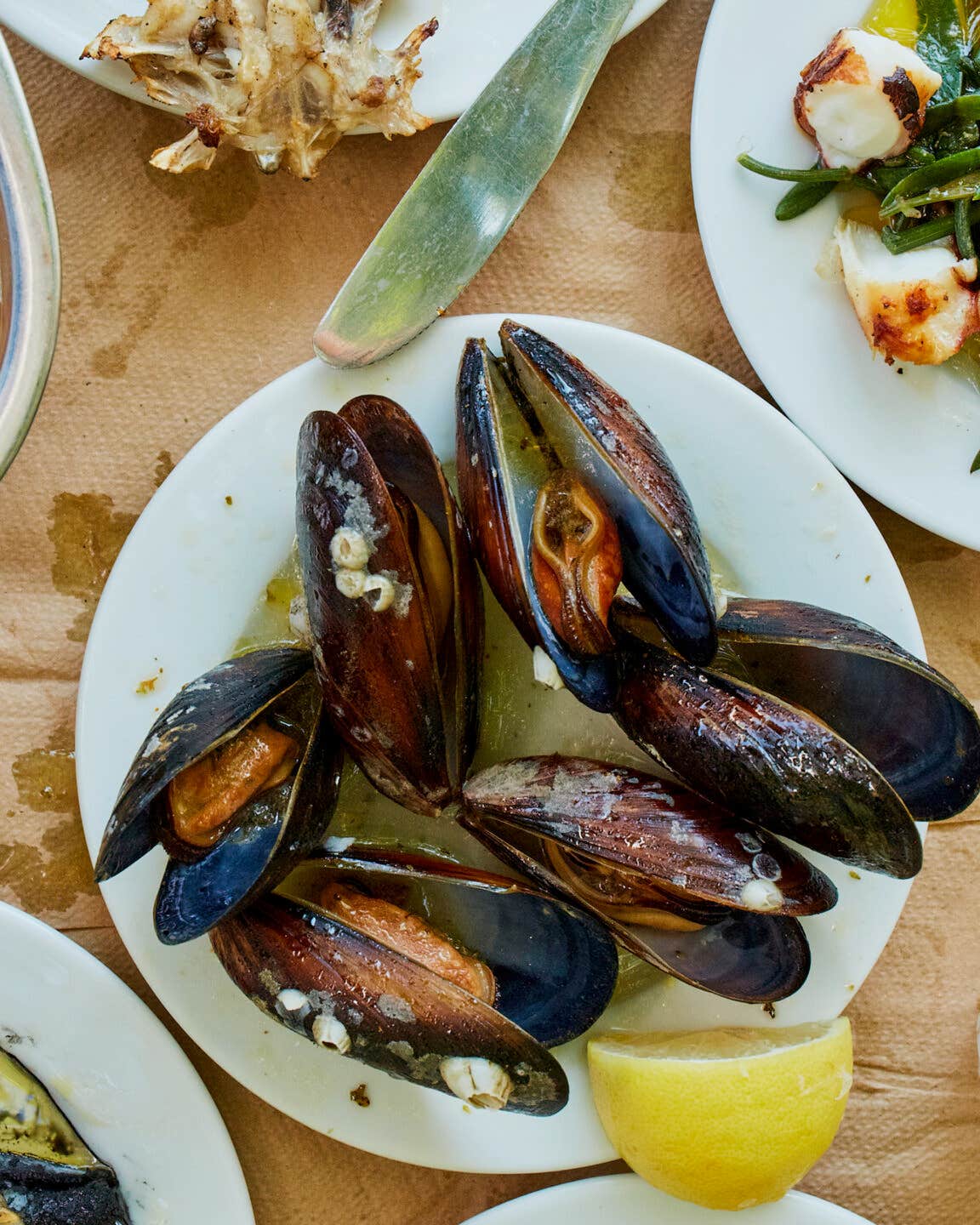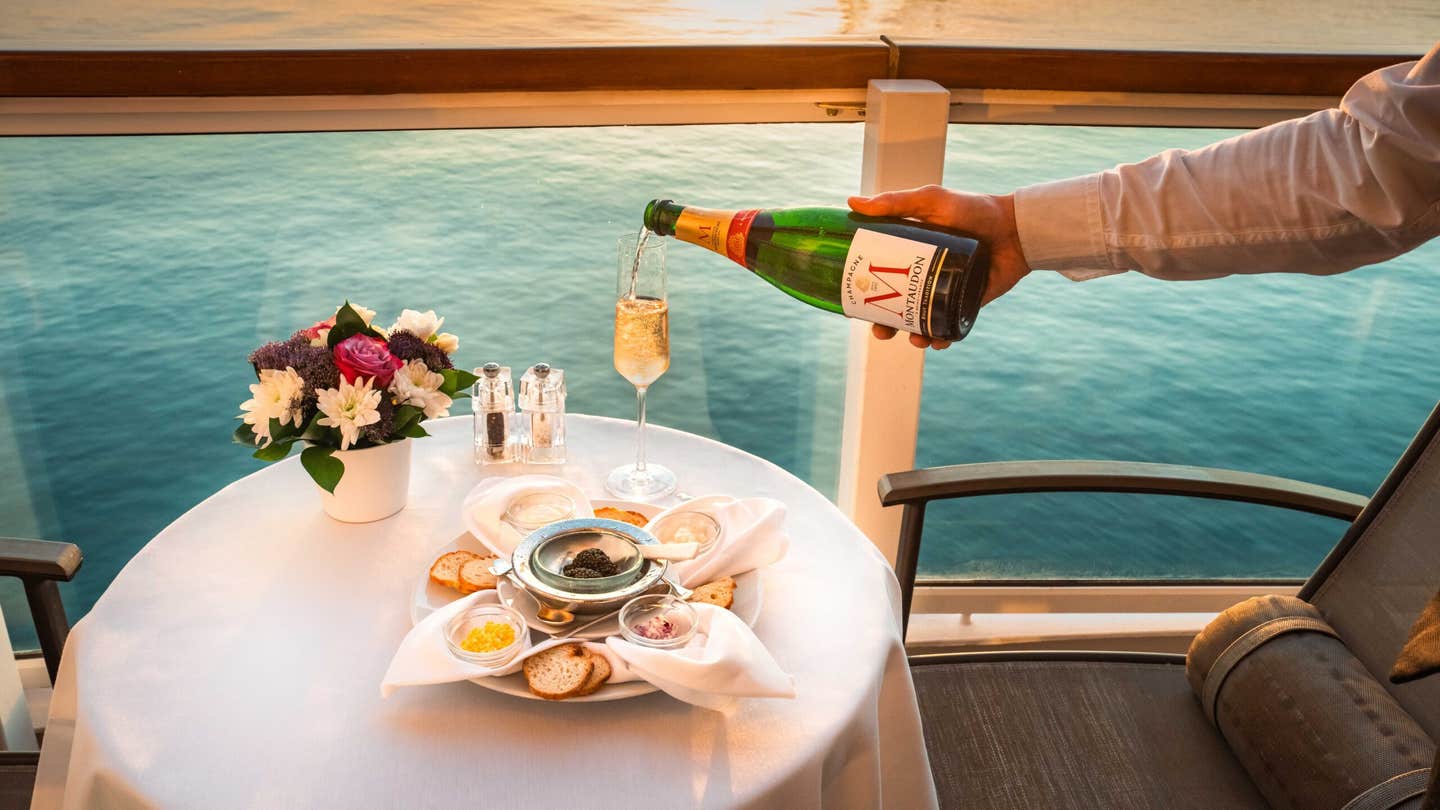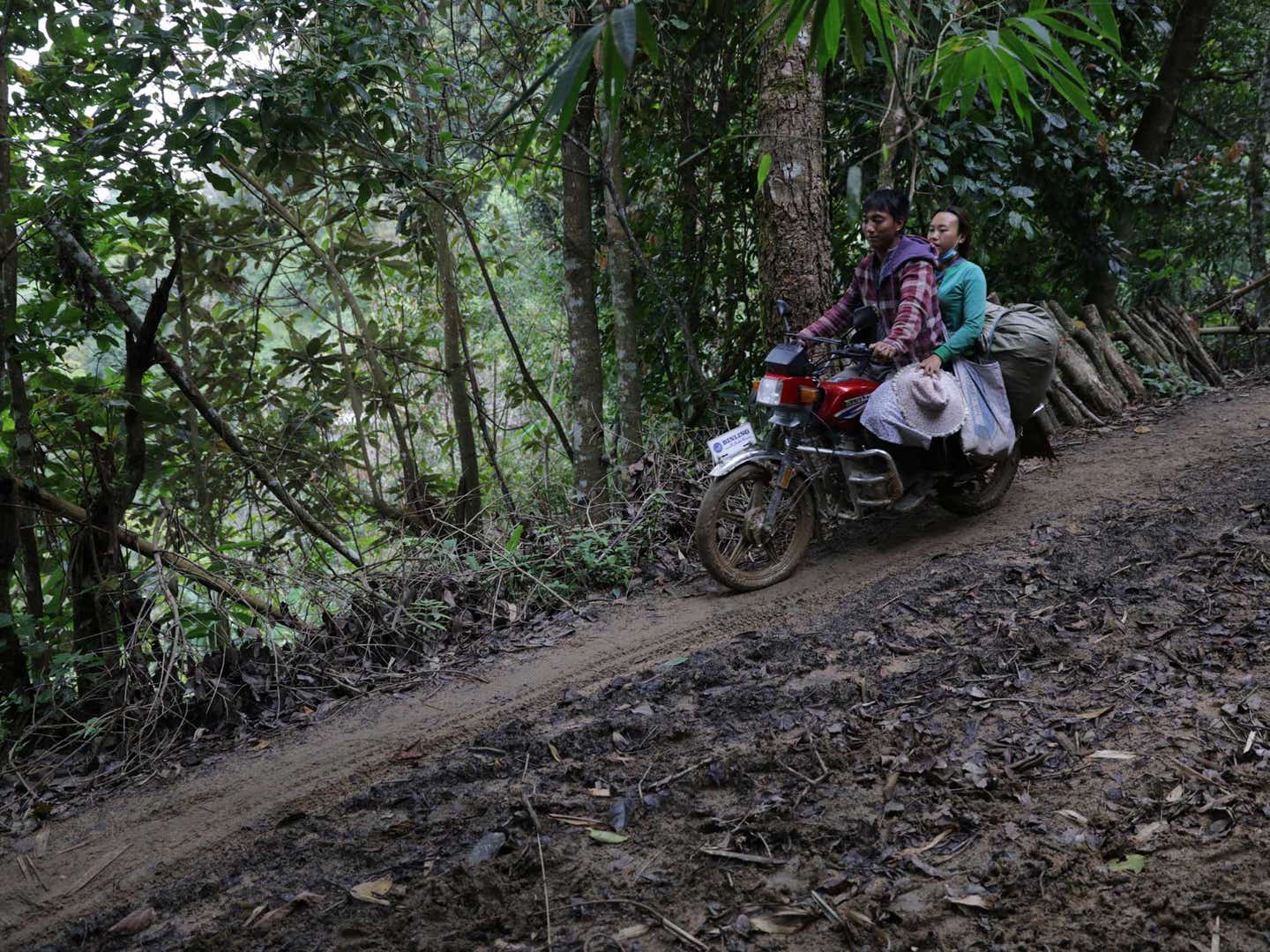
The Pu-erh Brokers of Yunnan Province
Pu-erh is the Helen of Troy of tea that gets aged like whiskey, dosed like drugs, and coveted by millionaires. And it only comes from this one mountainous corner of China
At 4,000 feet, the paved part of the road stops. It's fall, the rainy season in Yunnan, so the dirt trail that follows is more quicksand than pathway. Deep rivulets formed by rain creep along the 40-degree incline; get your leg caught in one and you're liable to break an ankle on the fall.
Short of an army Jeep, nothing on four wheels will make it up quicksand hill, so we leave our truck in the village and hop on the backs of motorbikes driven by locals who've agreed to take us the rest of the way. The ascent is slow, the driver kicking at boulders and bushes with his flip-flopped feet to keep us upright. Me, I'm just hanging on for dear life, leaning hard into the mountain and this stranger's hips because if I slump back, the bike's engine stalls.
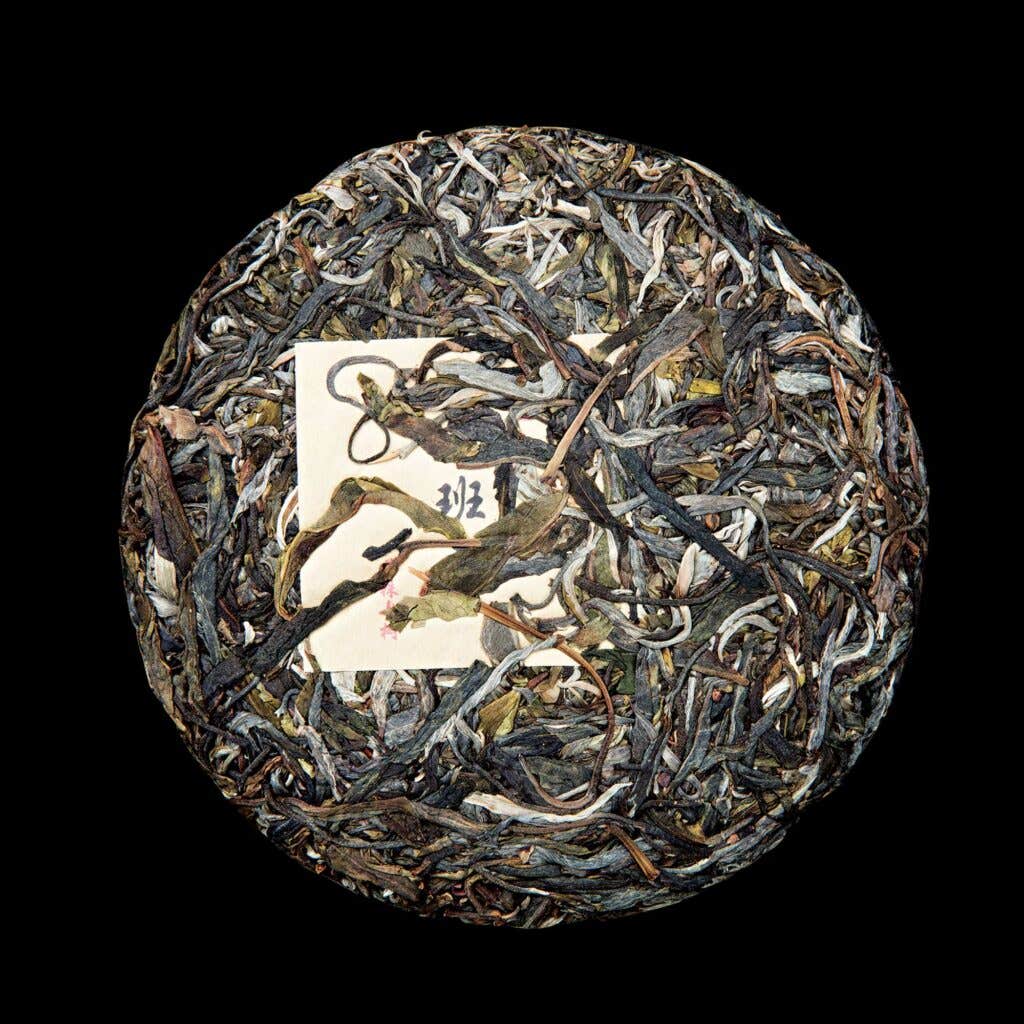
There's no guardrail in sight, and the uninterrupted view leaves me dumbstruck with its primeval beauty. Mist cloaks the mountains sprawled across the horizon; up close, all you see is reedy bamboo, gnarled trees, gemlike wildflowers, and a near total absence of human settlement. Left to its own devices, Xishuangbanna Prefecture in southern Yunnan is jungle territory, and the sheer biodiversity here is awesome in the classical sense of the word.
At 5,500 feet, the road part of the road ends altogether. We walk, single file, along a trail I can just make out by following the footsteps of Paul Murray, the American tea dealer. The villager in the lead unhooks a machete from a bungee cord belt to hack his way through the bamboo overgrowth.
A few slips, falls, and dead branches conking on heads later, we finally reach a clearing. Close your eyes and imagine what Eden looked like. Got it? Here it is: a grove of knobbly, ancient trees dotted with fragrant pure-white blossoms. Dragonflies the width of my palm race through the air over sun-dappled banana leaves as wide and floppy as green blankets.
“Here,” says Paul, plucking a bud off the end of a tree. “Try this.” The taste is bitter and untamed—electrifying.
This is naturally grown, high-altitude, old-arbor pu-erh. The Helen of Troy of teas that's become synonymous with luxury and power but is only grown in this remote and mountainous corner of China. The precise location of which I've been sworn to secrecy about because Paul doesn't want anyone to know where he procures the really good stuff for White2Tea, his online company.
If you're hardcore about pu-erh, soon enough you'll hear about Paul. To some he's an enigmatic ambassador for a community of Western tea enthusiasts that trade brews and bravura in chat rooms and forums. To others he's a recalcitrant asshole who refuses to release enough details about his products and charges too much for them. In the world of pu-erh, such lacunae are more common than you'd think. Because while tea has drinkers, pu-erh has addicts. And here, in this magical grove on a mountain in Yunnan I'm not allowed to name, is a taste of the lengths those addicts will go to get their fix.
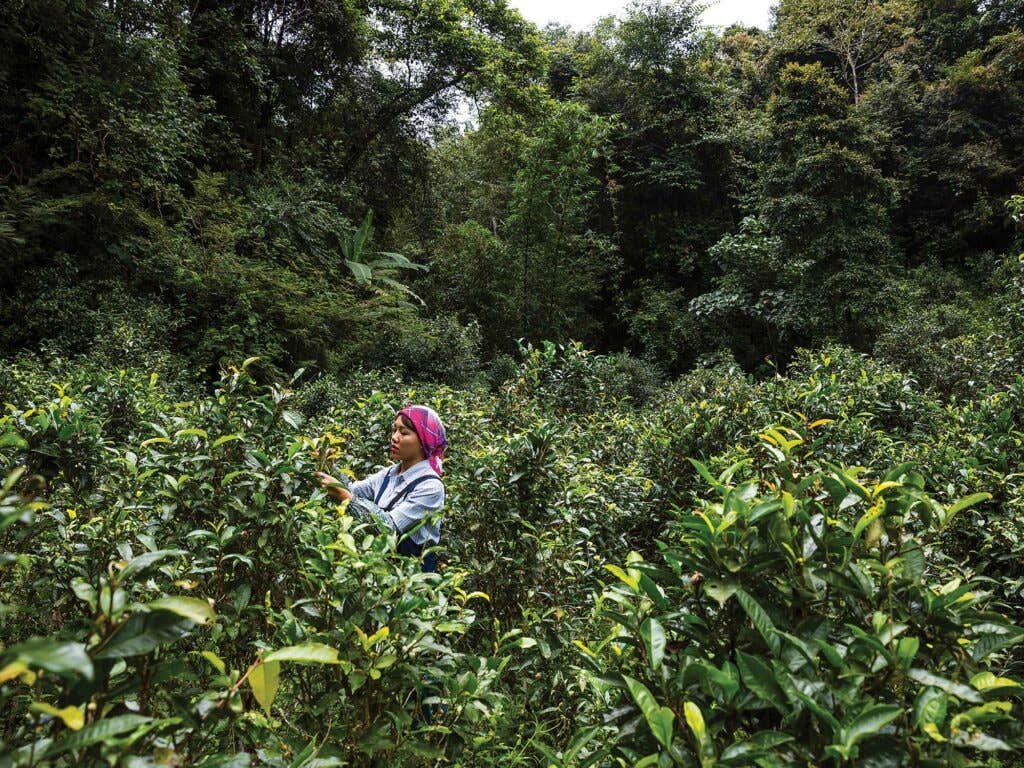
On the southwestern border along Vietnam, Laos, and Myanmar, Yunnan Province is not what you think of when you think of China. Culture and food blend seamlessly into the nations of Southeast Asia. The Hani and Lahu people, two of the 20-plus ethnic minorities that have called the mountains home for thousands of years, could pass for Burmese or Tibetan. Much of the architecture looks Thai. The food wouldn't be out of place in Hanoi.
For all the wealth China has accumulated over the years, Yunnan has seen little of it. For decades that's meant relatively modest urban expansion outside the capital city of Kunming and crushing poverty in some rural areas where mining or cash crops of tobacco, rubber, bananas, and sugarcane can't pay the bills. Tea has been in Yunnan forever, but it's only in the past couple of decades that anyone's wanted to pay anything for it.
Scholars suspect Camellia sinensis—the bush all tea comes from—first originated in what's now Yunnan over to modern-day Assam in eastern India. And for hundreds of years growing, selling, and drinking pu-erh has been a daily staple of Yunnan life—a cheap local product pressed into dense bricks for portability, wrapped in bamboo, and laden high onto the backs of mules and men to be traded along caravan routes to equally poor places. Hardly the stuff refined elites even wanted, let alone lusted after.
Ripe Pu-Erh
An alternative to green “raw”-style pu-erh is “ripe” pu-erh, made from leaves that compost in big, humid piles for a few months, which accelerates the aging process to mimic the taste of vintage tea. It’s generally less expensive than raw but also less complex.
Then something happened. Starting in the late 1990s, tea farmers noticed an influx of well-to-do buyers from Taiwan, Hong Kong, and Guangzhou, willing to trek all the way to the mountains and pay unheard-of amounts for their pu-erh. In the mid '80s, pu-erh sold for pennies a kilo. By 2006 prices had climbed high into the hundreds of dollars.
Seemingly out of nowhere, this regional bittersweet brew became an object of Chinese national obsession, a modern luxury with a cult following and a horde of investors thirsty to cash in on a gold rush. Faraway speculators paid top dollar for production lots they never bothered to taste. Crafty smugglers schlepped tea to famous mountains so they could sell it for higher prices. And forgers started blatantly copying successful brands' packaging to dupe unsuspecting consumers. The bubble burst in 2007, sending a rampant futures market spiraling downward out of control. Now prices are climbing again with no sign of falling. Pu-erh's rise has turned many of Yunnan's farmers and merchants into overnight millionaires. It draws tourists not just to the tea mountains, but to the entire province, and it's helped spur a new era of development in tea-trading urban centers.
Beyond Yunnan's borders, pu-erh is a shibboleth of sophistication, a battlefield on which self-styled masters come to blows over tiny details of cultivation, terroir, and storage. But here in the mountains, for people long used to picking, processing, and selling the tea for pennies, its unlikely success is simply a green miracle.
Watch: The World's Most Coveted Tea
"This place is not at all typical of pu-erh production today," Paul says as we clamber over ferns and errant roots. We're joined by Dabu, whose family has owned the land for 200 years. By Dabu and Paul's estimates, many of the tea trees are well over a century old.
Dabu sports faded green highlights beneath a traditional pink Hani headscarf, and her pin-striped blouse and dark blue jumper would look at home on the streets of Shibuya or Soho. She comes from a family of tea farmers, but at the age of 23 she's branched out in new directions, launching successful businesses selling honey, sugar, and modern variations on traditional Hani clothing. “I used to be afraid of this place when I was younger,” she says of their secret grove reachable only by treacherous hike. “But now it brings me to tears, it's so beautiful.”
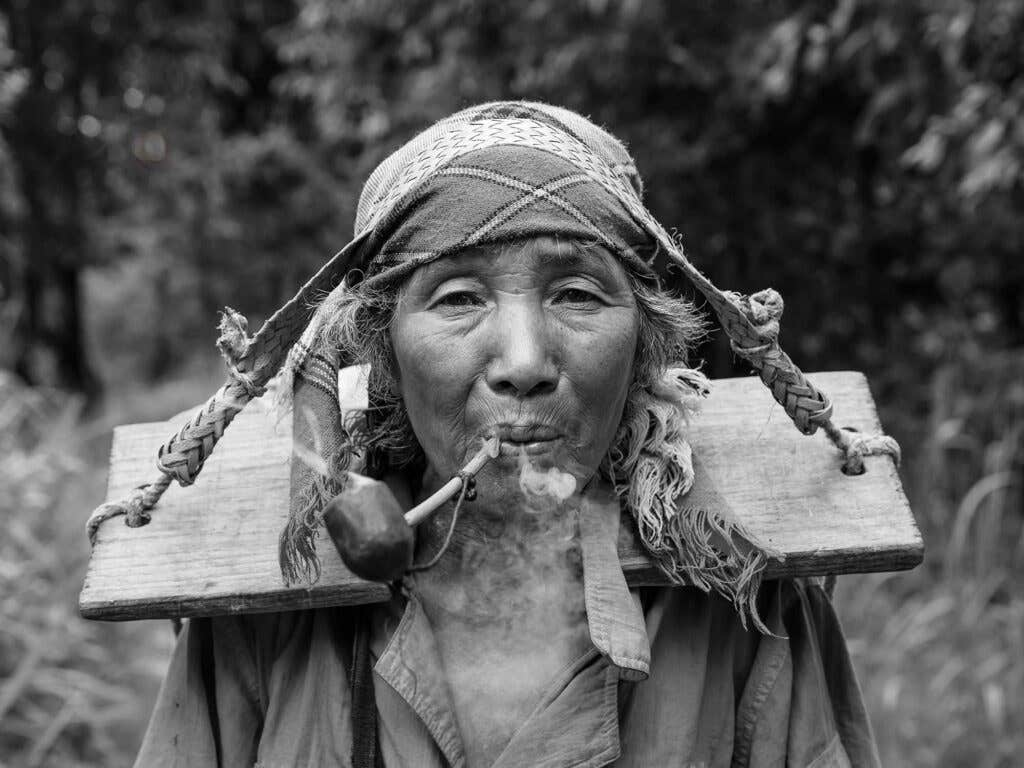
On a standard tea plantation, row after row of verdant bushes sweep over hillsides with geometric precision. It makes for great photos but not necessarily great tea. Tea planted as a dense monoculture saps soil fast, and the shallow root systems of young bushes can't drink up the deeper layers of nutrients that older trees can access.
Here the trees have room to breathe, to grow into hulking sinister things, their bark crusted over by lichen, their roots entrenched in the earth. Smaller plants sprout up between the trees, adding critical layers of biodiversity lacking on plantations.
“It's not just about the age of the trees,” Paul says. “It's the whole environment, that nothing's been interfered with.”
All this wildness produces a tea with more energy and intensity than the plantation stuff, though at the cost of a much lower yield and a much higher price. But Paul doesn't care. “I tell Dabu's family, ‘It doesn't matter what it costs me. Just keep selling your tea to me, not other people.’ Finding this place has taken years of searching and building relationships, and I don't want anyone to know where it is.”
It's time to head back to the home of Dabu's aunt and uncle below. By now they're processing the day's haul of leaves and we don't want to miss it.
On the way down the mountain we pass two women hoisting massive bamboo baskets on their backs. They're on their way up to pick leaves from a nearby grove, then take them back to the village where the tea will be wok-fired, rolled, and dried, then sold either on-site to itinerant merchants like Paul or at larger markets. We saw these women before, casually ambling down the mountain on foot while we struggled our way up by bike. Two hauls a day are typical for them, one of them tells us after taking a deep drag on her pipe.
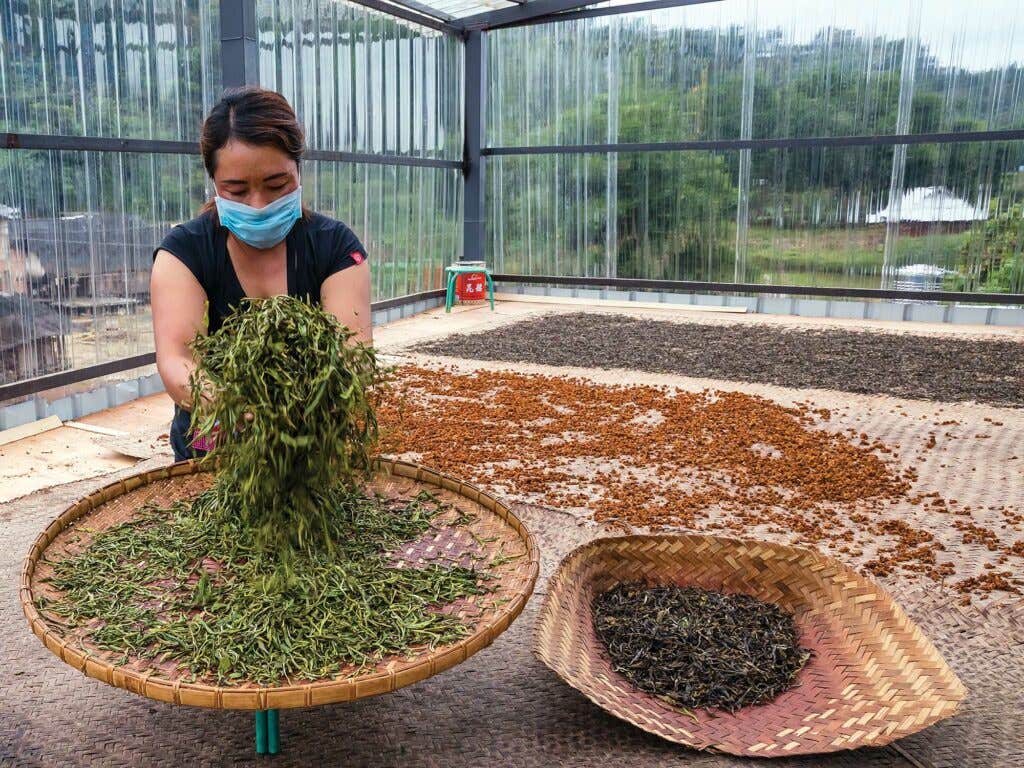
Dabu's aunt Er Lu grabs a load of fresh leaves and uses her hands to toss them in a massive wood-fired wok.
The tea sizzles and sputters, giving off aromas of wilted greens, caramel, and incense. “She's cooking the leaves for longer than usual,” Dabu says, “to drive out some of the extra humidity.
“This time of year, with this much rain, all bets are off,” Dabu goes on, explaining that too much rainfall means there's no guarantee the tea will be any good, and too much moisture in the air means it takes extra skill to dry it properly. “You really have to know how to work with the leaves.”
Getting this step right is crucial for good pu-erh. You have to cook the leaves enough to break them down and drive away moisture, but not so much that you completely shut off the enzymes that cause oxidation, as you would if you were making green tea. Processed properly, the tea will slowly oxidize and ferment after it's dried, transforming over the years and decades from a sprightly green into an earthy brown with layers of dried fruit, leather, petrichor. Over time, the fresh top notes of the tea fade into something deeper, almost medicinal. Brackish bitterness becomes a mellow sweetness that lingers in your throat. The brew turns silky in the mouth and its warmth slinks through your body. It's rib-sticking.
It's this capacity for aging that's made pu-erh such an object of desire, that's driven prices up a thousandfold over the past couple of decades. Some old-school drinkers in Hong Kong won't even touch the stuff until it's been aged for 10 to 30 years—anything younger is too green, they'll say, too rough on the stomach.
The weird thing is, in Yunnan, almost no one ages their tea. Until the pu-erh rush of the past few decades, most locals didn't even know you could age pu-erh. Ask producers today if they have any interest in the stuff and they mostly respond with a shrug. "I prefer tea that's bitter first, then hits you with sweetness later," one tells me. "Aged pu-erh is only sweet."
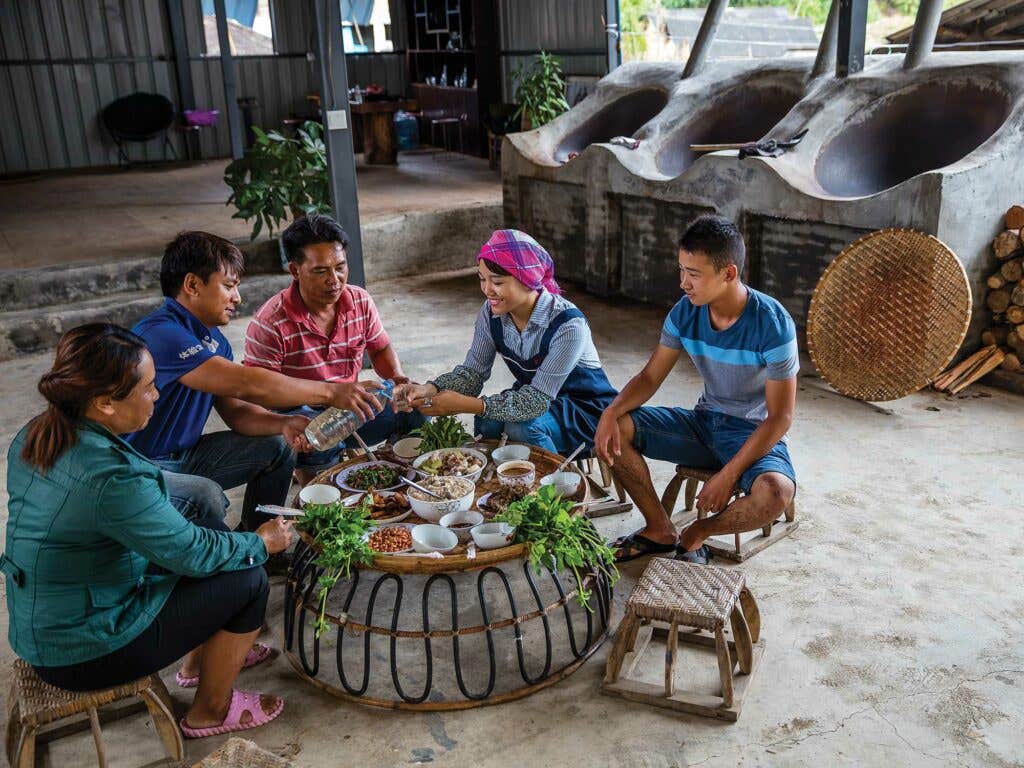
Once Er Lu finishes cooking the leaves, she rolls and kneads them by hand to squeeze out even more moisture. Then she spreads them out onto mats to dry for hours in the tropical sun. The timing for all of this is critical: Wait too long to fire the leaves after picking and they may oxidize too much; knead them too little or too long and the taste won't be right; dry them on a too-humid day and the day's production may brew up cloudy or bland.
Paul gives some of his farmers specifications for how he'd like them to process their tea; for other sources he buys the loose tea as is. From there, he tastes and tastes and tastes, brewing fresh tea well into the night, as he composes blends of material from multiple sources for each of his productions. Once he's settled on a blend, he'll take his haul of maocha—"rough" loose tea—to one of Xishuangbanna's many factories where workers in hot, hazy rooms portion out leaves, steam them for a few seconds until soft and pliable, and press them into dense disks called cakes for easy transport and, ultimately, long-term aging.
After working through a few rounds of tea, Er Lu sits down with us and the rest of the family for a lunch of wild herbs dipped in prickly chile sauce, a deeply satisfying chicken and rice porridge, and refreshing pork and winter melon soup. And moonshine, of course: the preferred drink of tea farmers everywhere, cheaper than water and as good for killing stowaway ticks as for toasting every five minutes, as you do in Yunnan.
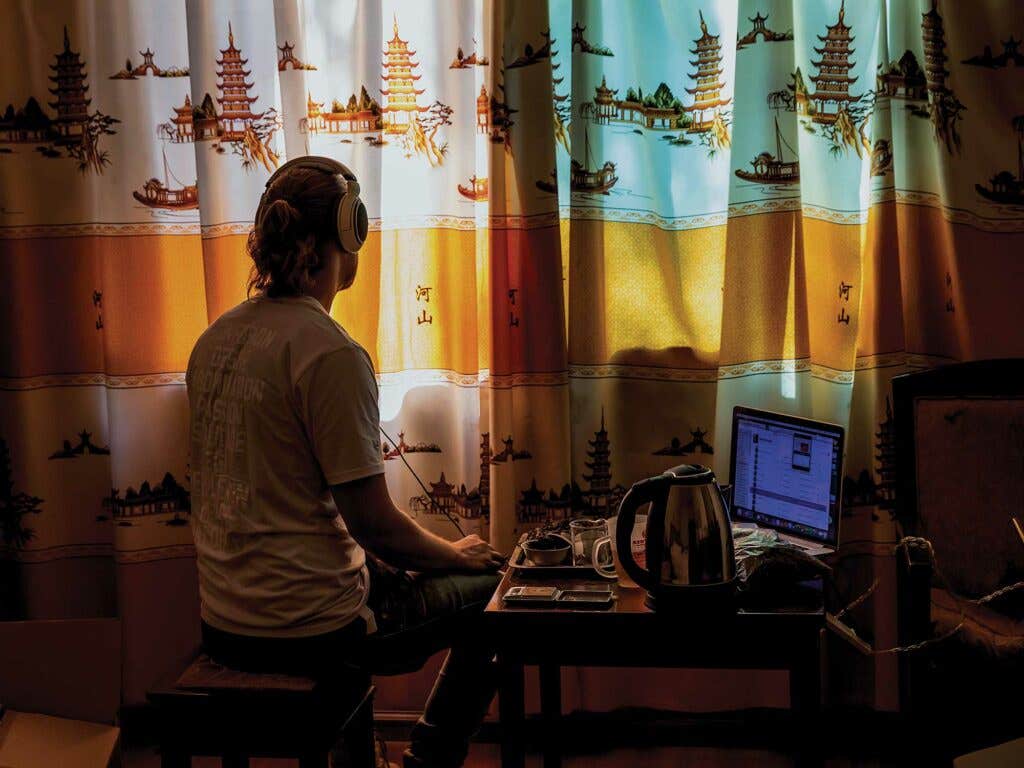
Like most pushers, Paul doesn't talk much about himself. But you already know him. You went to high school together, where his uniform was band T-shirts, baggy jeans, and giant headphones. There was that one party senior year when you spent hours getting blazed while he spoke at length about Titian and Nirvana—then you graduated and never heard from him again.
After getting his degree in fine arts, Paul moved to China to study Chinese in 2005. He wasn't a tea drinker then—a brief stint as marketing director for an Italian wine company and an obsession with poker kept his attention elsewhere—and later he only adopted a tea habit as a source of caffeine to keep him up during hours-long online gaming sessions. But as he drank his way through the world of tea, he noticed how he kept getting sucked into pu-erh's gravity well.
“The first time someone introduced me to really high-quality old-tree material was when I saw that other teas just couldn't hang,” he says. Eventually he amassed more than he could drink in a lifetime and in 2011 started selling some of his stash to buy even more. In 2014, White2Tea became his full-time business. In 2015 he moved from Beijing to Guangzhou in part because he prefers the latter's climate for storing and aging pu-erh.
Twice a year, in spring and fall, Paul swaps home in Guangzhou for a flophouse in Menghai, a small city of 63,000 in Xishuangbanna that thanks to its proximity to a number of tea mountains has become one of Yunnan's major pu-erh trading centers. It's a big but concentrated business: Pu-erh only comes from Yunnan, and only from the big-leaf assamica variety of the tea plant processed in a particular way. While you can buy cakes of pu-erh all over China and across the internet, you never really know if you're getting what you think you're getting unless you buy the maocha yourself and watch over its production. And even then, farmers and middlemen may swap one lot for another right under your nose.
And like many dealers of intrigue, Paul prefers not to show his face on camera. He only agreed to take me around Yunnan on the condition that we keep him under wraps. Why the secrecy? “Maybe it's a Wisconsin thing,” he says. “But I feel like my face isn't the point. It's a conscious decision to keep me out of the brand.”
That choice reflects his broader frustration with the tea industry—both Chinese and Western—that privileges self-described experts, origin statements, and Orientalist exoticism over raw product quality, especially considering how many of those experts exaggerate the rareness of a tea or the age of the trees, or flat-out lie about where it really comes from.
“There are statements some companies make about their tea that if you spend any time here you know can't be true.” Paul's normally a pretty chill guy, but here his gentle Midwestern cadence turns to rancor. “They say these leaves are from 800-year-old trees or from that super-rare area. If you know the market prices for that material, it's obvious there's no way. But I can't say anything about it, because if you try to be truthful, there's a thousand vested interests rooting for you to fail.”
So where most tea descriptions are choked with tasting notes and questionable histories, Paul' are maddeningly spare. This year he hit peak obscurantism with a production he calls the Treachery of Storytelling Pt. 2, which costs $369 for just 200 grams and features a label scrawled with purple text shouting, Magritte style, this is not old arbor puer.
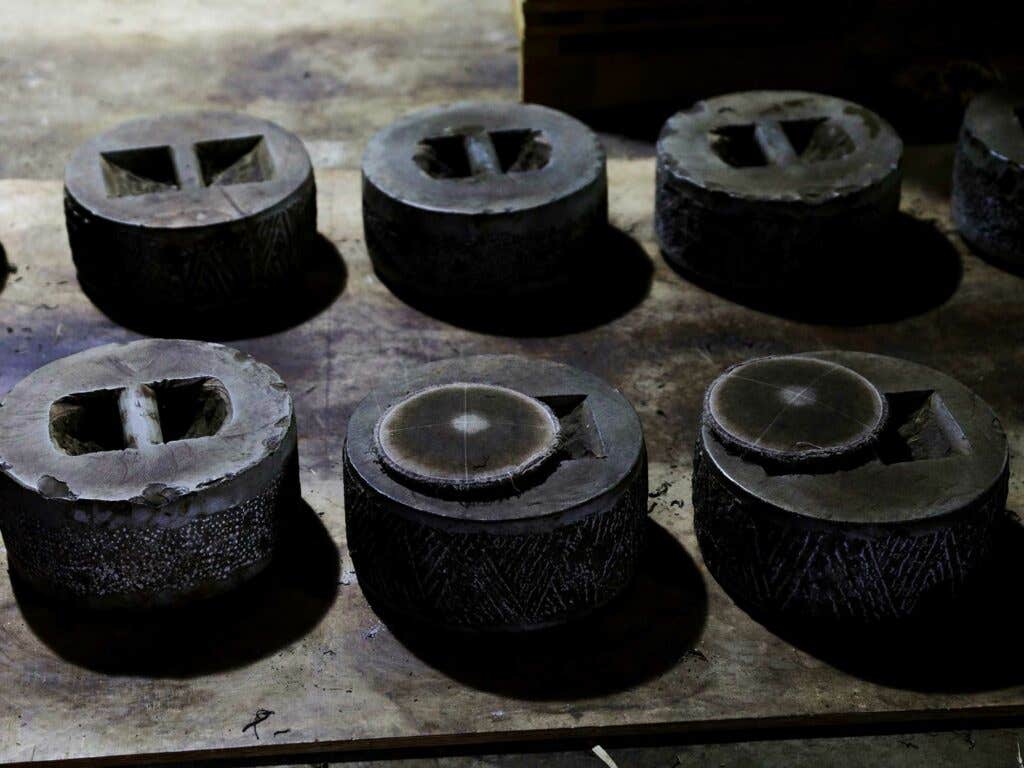
Published in 2013, Dr. Jinghong Zhang's book Puer Tea: Ancient Caravans and Urban Chic is the definitive English-language text on the subject. Zhang's chief metaphor for describing the tea's complexities, controversies, and contradictions is jianghu, which translates literally as "rivers and lakes" but refers to a storied literary and cultural concept of a "non-governmental space…[with] its own chaos, full of dangers and contests" where martial artists and rogue knights converge and "bandits…declare their tough resistance to authority."
Those bandits are literal as well as metaphorical. In 2015, Chinese officials arrested five people for counterfeiting eight metric tons of tea under the famous Dayi brand, which they would have been able to sell for almost a million dollars, a roughly 40-fold profit margin. But for every fraudulent tea shipment caught by authorities, countless others slip through the cracks.
Compared with most teas, sold anonymously through layers of middlemen, it'd seem that understanding pu-erh—which has established brands and recognizable labels—should be more objective. If two people brew two separate pu-erh cakes from the same production, they should, in theory, be drinking the same thing. But it's that very presumption of authenticity that makes pu-erh so confounding and ambiguous. Separating a pu-erh from the stories built around it comes down to each and every drinker. Who do you believe, what can you believe, and how much can you trust your own senses about what's true?
It's strange to think that for all of pu-erh's history—its primordial heritage in Yunnan, the centuries of human life built around it—these modern cultural constructs and obsessions are only a few decades old. When I talked to Dr. Zhang by phone she told me, “Before the 2000s, the very definition of pu-erh wasn't clear to most people in Yunnan.” Even now, she said, “the so-called art of making pu-erh is still on the road of being invented.”
Paul's not interested in helping anyone understand what pu-erh is or what it really means. “I'd be thrilled for someone else to take that up,” he says. The innate vitality of the tea matters to him far more than the fluttering factual details we're trained to focus on as consumers. Drill too far down into that stuff, and soon “you're carrying around so much baggage that you're more focused on what something should be than what it actually is.
“I think people think about this stuff too much,” Paul goes on. “It's like trying to think about sex while you're having sex—can't you just enjoy the sex? If you ever try to describe a high to someone, the words always fall short.”
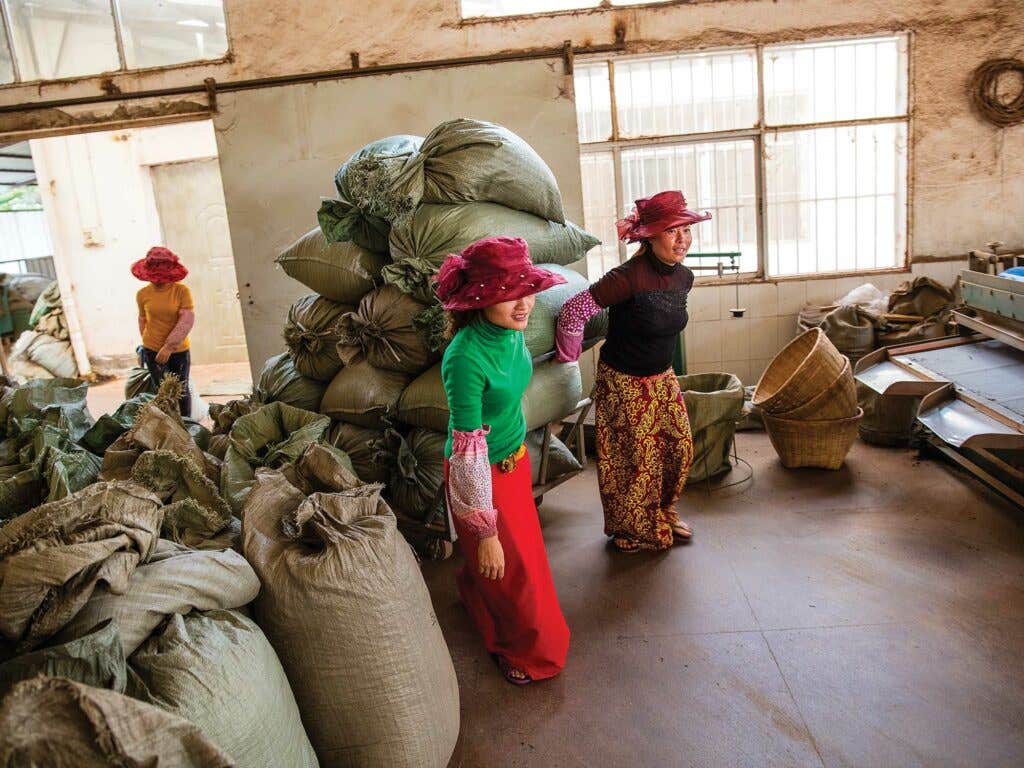
A couple days later we're hanging out at Paul's office, a buddy's no-frills white-walled tea shop in Menghai.
The word shop suggests a place where you can actually buy tea, which is a bit of a misnomer in this case, as Paul's friend Ge already sold his entire season's harvest before it was finished being picked. Ge is from Lao Banzhang, a remote village on Bulang mountain in southern Xishuangbanna that produces some of the most sought-after—and counterfeited—pu-erh in Yunnan. So, while you can't buy tea at this Menghai storefront, it makes a nice place for friends and family to hang out and drink. Ge can spare the rent. Paul suspects his tea brings in half a million dollars a year.
Pu-erh from Lao Banzhang is prized less for its taste than for its strength of somatic character, what Paul calls "body feel" and some tea people refer to as qi, literally "breath" or "energy flow." When it comes to Chinese tea, especially high-end pu-erh, taste is only the beginning. A tea's qi hits you deeper than any flavor. It flows to your shoulders, your chest, your belly. It can creep between tight joints and turn your muscles into jelly and make your skull feel like it's being caressed under your skin. There's pleasant qi and unpleasant qi; this Lao Banzhang we're drinking delivers bombastic qi. A few sips in and I'm already sweating. A few more and my chest feels like a furnace. My knee pits are drenched—did you know knee pits could sweat?—which I only register by reaching down and touching them, because I can't feel my legs anymore.
I have to turn a fan on my face because the high is getting too intense. Everything is sunlight and the world tastes ecstatic and someone in the distance is saying something fascinating and I want to write it down but the pen keeps slipping out of my fingers.
Paul and his buddies are used to this kind of juice. I'm not. Very little genuine Lao Banzhang makes its way to the Western market. Even in China, most of the good stuff is scooped up fast by plutocrats with money to burn.
Fortunately a street vendor is passing by with rods of bamboo stuffed with sticky rice that he grills over a portable charcoal stove. We take a breather and eat for a while. The rush slows, but half an hour later the tea is still dancing in my throat. We move to another tea and carry on drinking time. The hours taste like minutes.
I know how all this sounds. There's a lot of dreamy language that makes its way into tea culture, but good pu-erh really is drugs. You do have to practice the high, though. Pay close attention to what's happening to your body. The effect is different for everyone, because you need to meet the tea halfway, open yourself up to what it's telling you. But when it hits you, you know. I've drunk pu-erh as soft and warm as a down comforter on a winter morning; another as exhilarating as that first deep breath of mountain air on a hike through the woods. One bad trip sent me spiraling into a panic so severe I had to pop a Xanax to calm down.
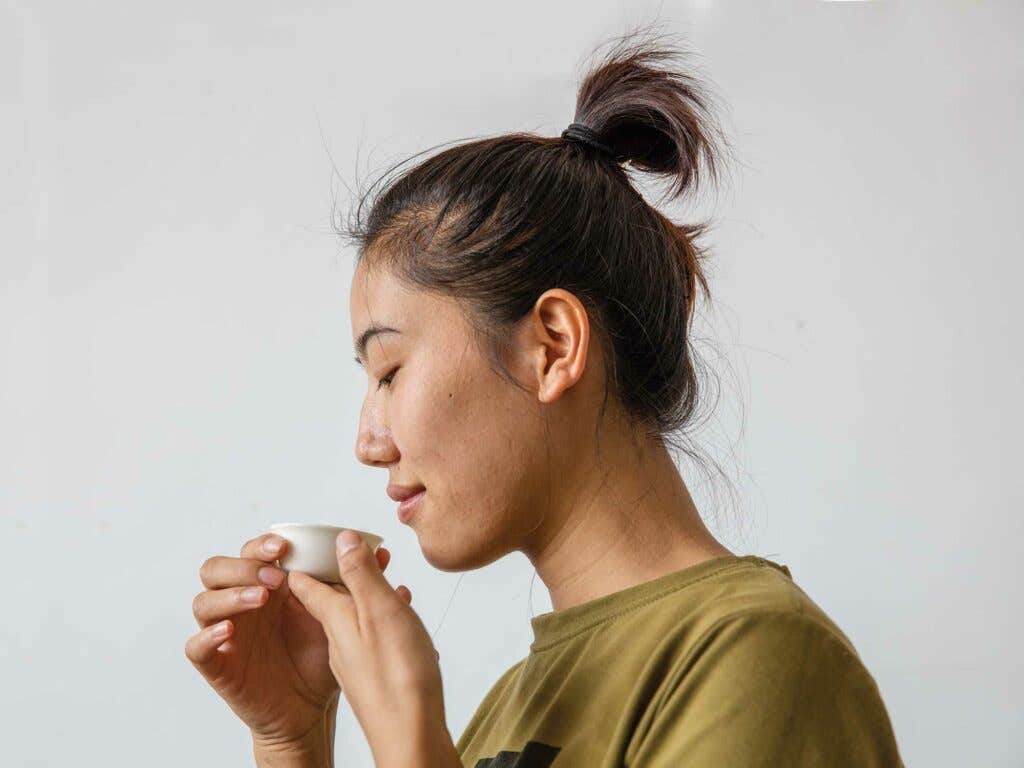
Paul's friend Xiao Chen runs another tea shop in Menghai. Business has been slow this week, so he's agreed to drive Paul and me around to eat noodles and shop for water buffalo meat while pointing out all the edible fruits, plants, and bark you can find along the road. Today we're making a trip to visit his girlfriend's family in Ya Kou Lao Zhai on Nannuo mountain.
Tea has been good to Nannuo. An hour away from Menghai with decent roadways, it's one of the more accessible mountains in Xishuangbanna. The pu-erh grown here commands only a fraction of the price of Lao Banzhang's, but in Ya Kou Lao Zhai, the second highest village on Nannuo, the street is lined with solar-powered lamps and McMansions all built within the last decade. Xiao Chen's girlfriend Wang Hong Ying greets us by the door of one.
In the past, Hong Ying's family grew more corn than tea, but as the pu-erh boom took off, they, like many families, changed their priorities. Hong Ying is just 21 years old, but she brews tea with studied grace and precision. She, her brother, and her father are all practiced tea producers; the tea we're drinking now was processed by her brother, Hong Cai, who's all of 24 but already making impressive tea with a deep sweetness and calming energy. “What do you think of your brother's tea?” I ask. She smiles, demure. “It's…a little more aggressive than the way I make it. More masculine.” Hong Cai breaks a sheepish grin to take another sip. He's the tea maker who likes his pu-erh bitter first, then sweet; Hong Ying is after more softness and elegance. “We're each other's teacher,” he says.
For lunch, we move from the patio to a small wooden shelter on stilts connected to but dwarfed by the giant modern house. Up until a year ago, this creaking one-room dwelling was what three generations of Hong Ying's family called home. Five decades of soot and smoke are baked into the walls from the bonfire in the center of the floor. Hong Ying is cooking with her mother, Li A Zhen, a feast of greens from the mountain, sour preserved bamboo, and some especially delicious grubs fried as crisp as potato chips.
I ask Mom what she thinks of her kids getting into pu-erh. “I want them to make their own choices and do whatever makes them happy,” she says. Hong Cai admits he's young and that he doesn't know what the future holds for him yet. But even in his lifetime he's seen how much his village has to gain from the tea—as well as what it might lose. “We worry about the pollution from the cars,” he explains. Just a few generations ago, mules were still the dominant mode of transportation around here. Now there's a car in every driveway and more on the road from tourists looking to buy tea and hike through the forest. “The more money people here make, the more they drive.”
We return to the patio after lunch to drink more tea and snack on cucumbers as fat as grapefruits and as sweet as melons. Then we spot Quezi, a relative of the family who's also in the tea business, ambling down the street with a bundle of greens under his arm.
Quezi doesn't like pu-erh that much, he says. He'd rather drink hot water. “And I like to have a smoke and some alcohol every day,” adds the 74-year-old. I ask him what's changed in the village since pu-erh took off. “Look around you,” he says, laughing and gesturing toward the road and the basketball hoop in the neighbor's driveway. “Everything. They repaired the roads and we make more money. But now we feel like what we have isn't enough, that we need to do better. The next generation can do better.”
On the other side of the table, Hong Ying is rinsing out her gaiwan—a 4-ounce lidded bowl—for the next batch of leaves. The idea is to brew the tea briefly with a lot of leaves, then re-brew the leaves again and again. The flavor and character evolves from the first to the fifth to the 10th brew. It's all part of an unceremonial but meticulous process that' not at all native to Yunnan. When buyers from Taiwan, Hong Kong, and elsewhere on the mainland came to the province to buy tea, they brought the style of brewing with them; now it's ubiquitous.
Quezi remembers a time when everyone was more casual about the whole thing. “We'd set a big kettle over the stove and throw in some tea leaves and let it all boil,” he says. “You didn't need to measure or anything. And after we drank the tea we'd add more water and boil it again, and do that at least five times. The more you do it, the sweeter the tea gets.”
Hong Ying pours water into the gaiwan, then decants the brew into a pitcher, then pours into thimble-size cups. At this point we've been drinking for well over an hour and I'm a little high again. Paul's sipping silently, looking out onto the road, and I'm chewing on the central contradiction of drinking pu-erh at its source: that as much as it is central to life here, the one thing you won't hear is any kind of dogma about what tea is or how it should be consumed.
One idea does persist. As Dr. Zhang, chronicler of pu-erh's allure and culture, puts it: “There's a sense that once you drink pu-erh, all other tea is useless.”
How Pu-Erh Becomes Pu-Erh
Depending on how you look at it, processing pu-erh from fresh leaves to finished tea takes as little as a day or as long as decades. Here's a cheat sheet to understanding the life of pu-erh, from tree to cup.
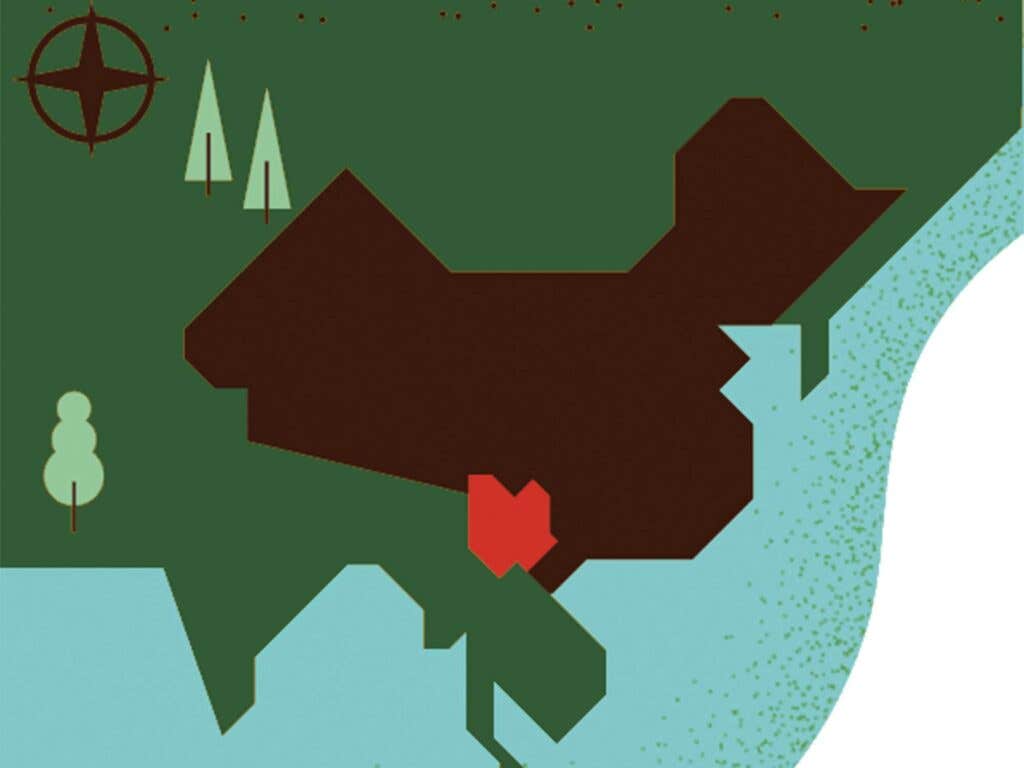
All tea is made from Camellia sinensis, but to be pu-erh, the leaves must be from the large-leaf C. sinensis var. assamica, grown in Yunnan Province, and processed to encourage oxidation and microbial fermentation.
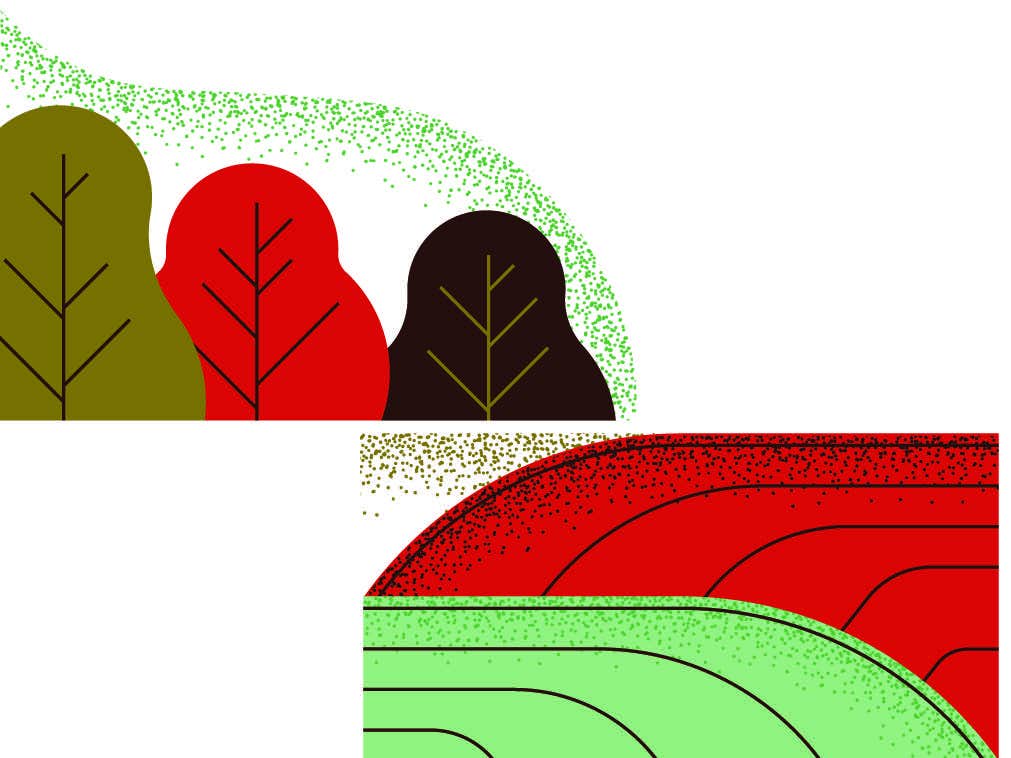
You'll find pu-erh bushes densely packed on plantations, but many obsessives go after tea made from old-arbor trees in wild, spread-out forest groves. Ancient trees—some centuries old—draw more complex nutrients from the soil for a tea with richer character.
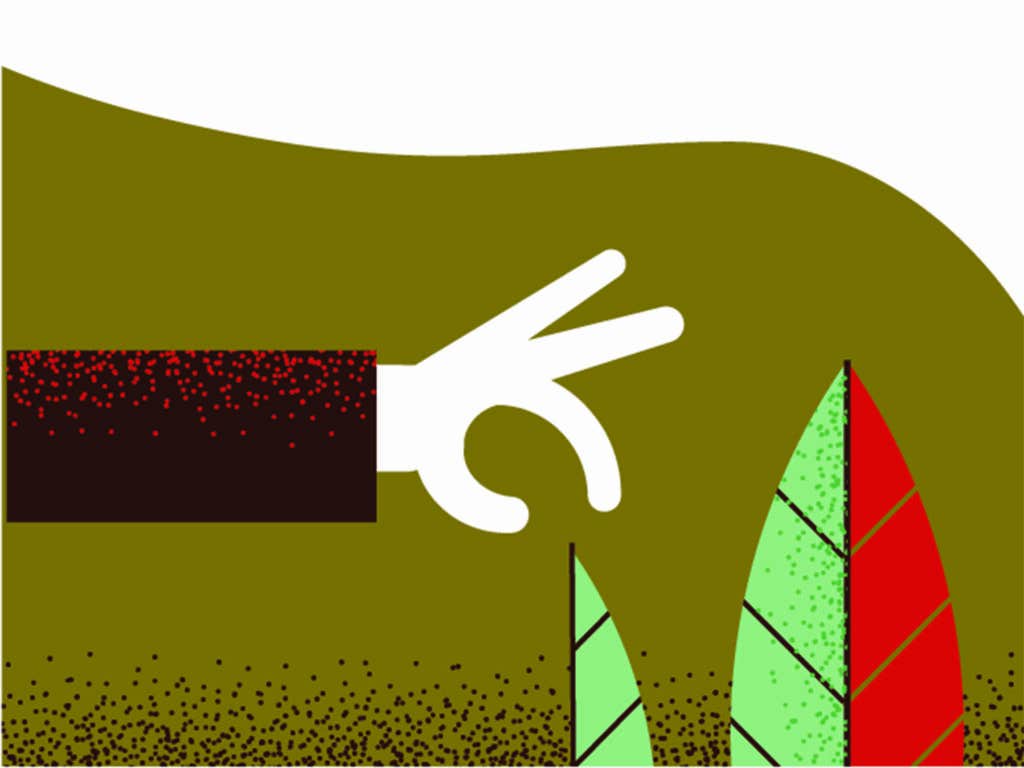
First, the leaves are picked by hand, then laid out on long beds indoors to wither.
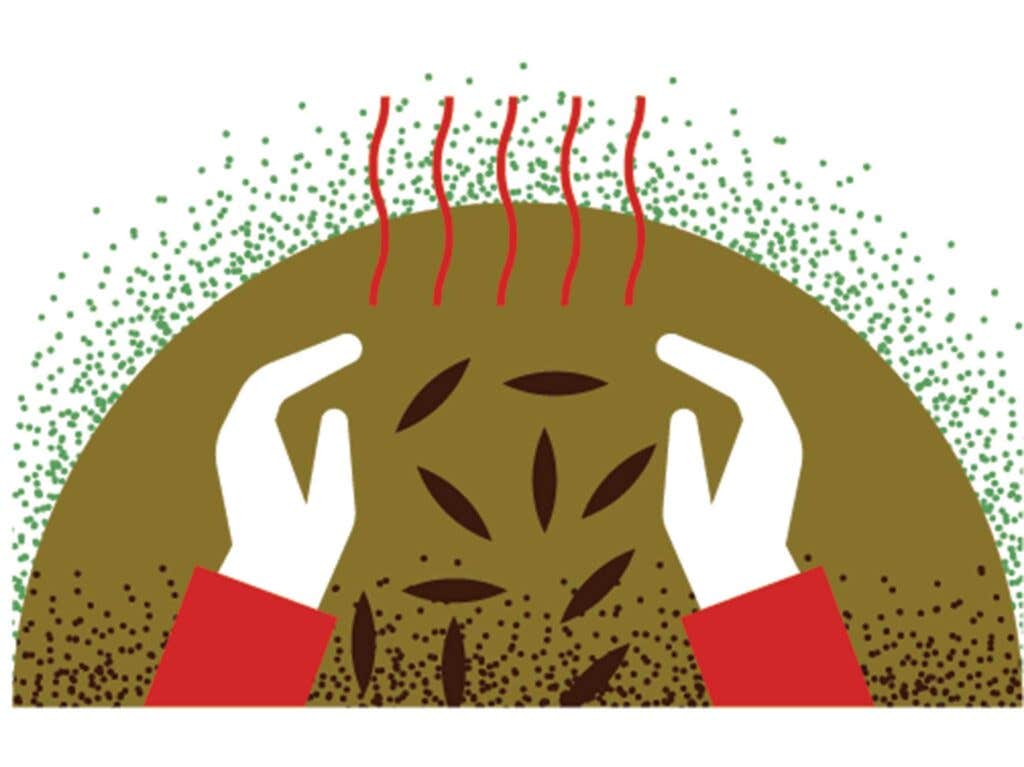
The withered leaves are then tossed in massive woks by hand. This “kill green” step drives out moisture from the leaves and moderates enzymes that would cause excessive oxidation.
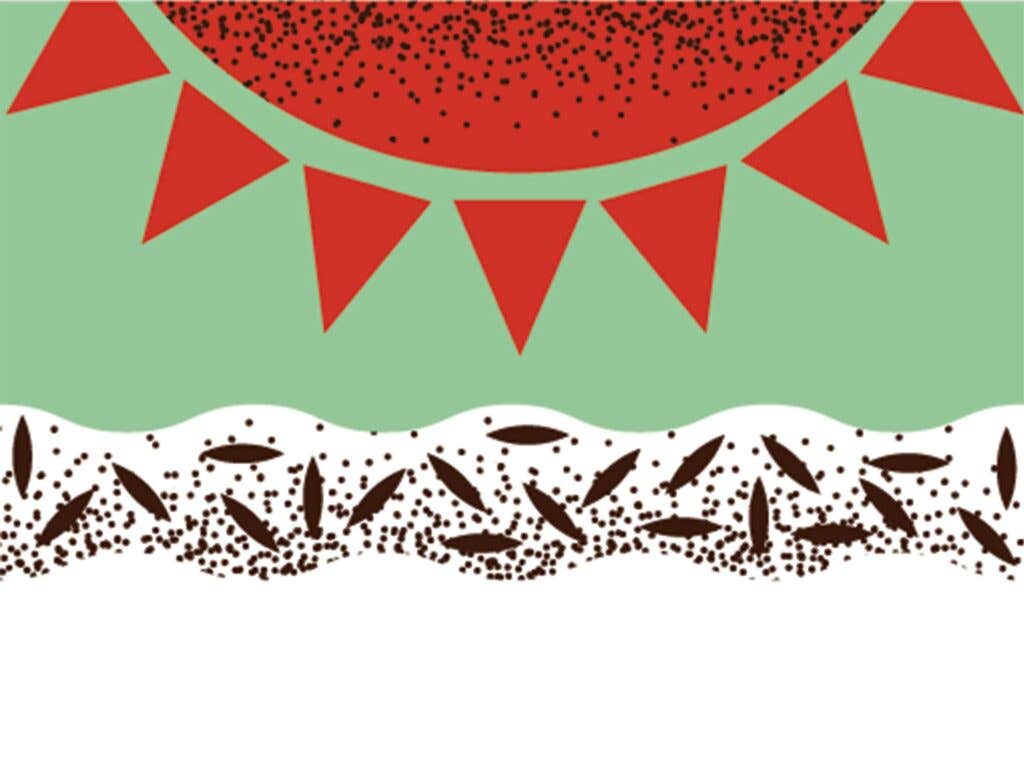
The leaves are then rolled and kneaded to develop flavor and aroma while driving off additional moisture. Finally, they're sun-dried.
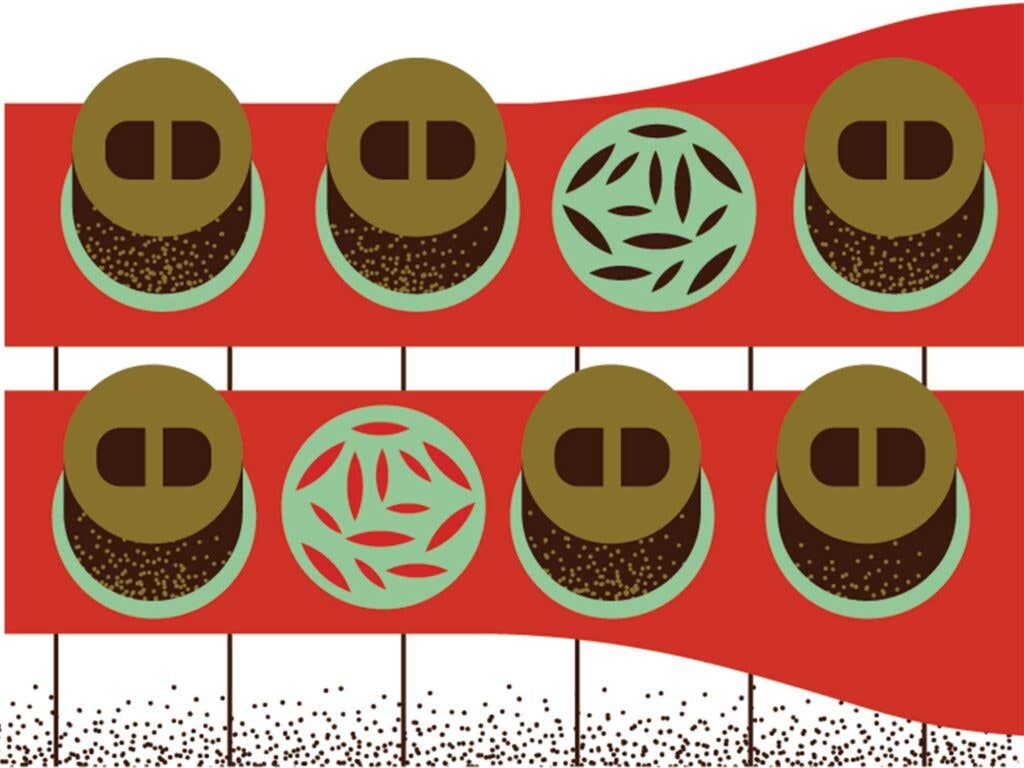
Most pu-erh is then compressed into dense cakes with heavy stones or hydraulic presses. People originally pressed the tea to make it easier to transport over long distances. Now they continue the practice to facilitate better storage and aging.
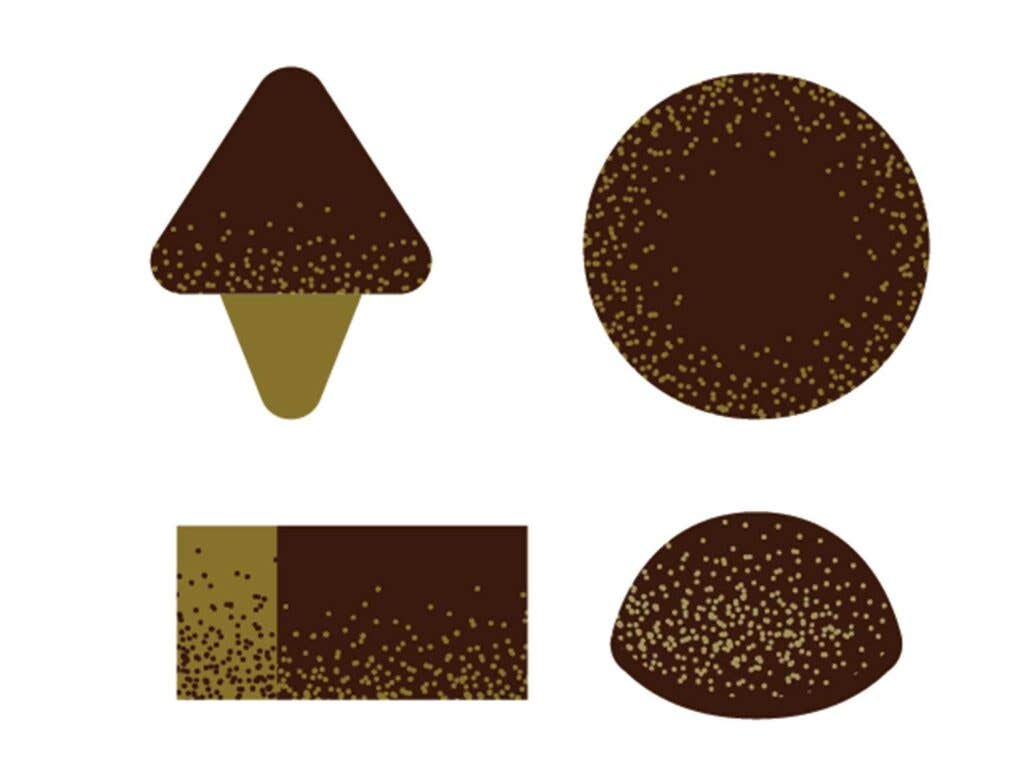
The tea can be pressed into a number of shapes, and the degree of compression also impacts how the tea will age. The tighter a cake is compressed, the slower it ages.
Mushroom = jin cha
Cake = cha bing
Brick = cha zhuan
Bowl = tuo cha
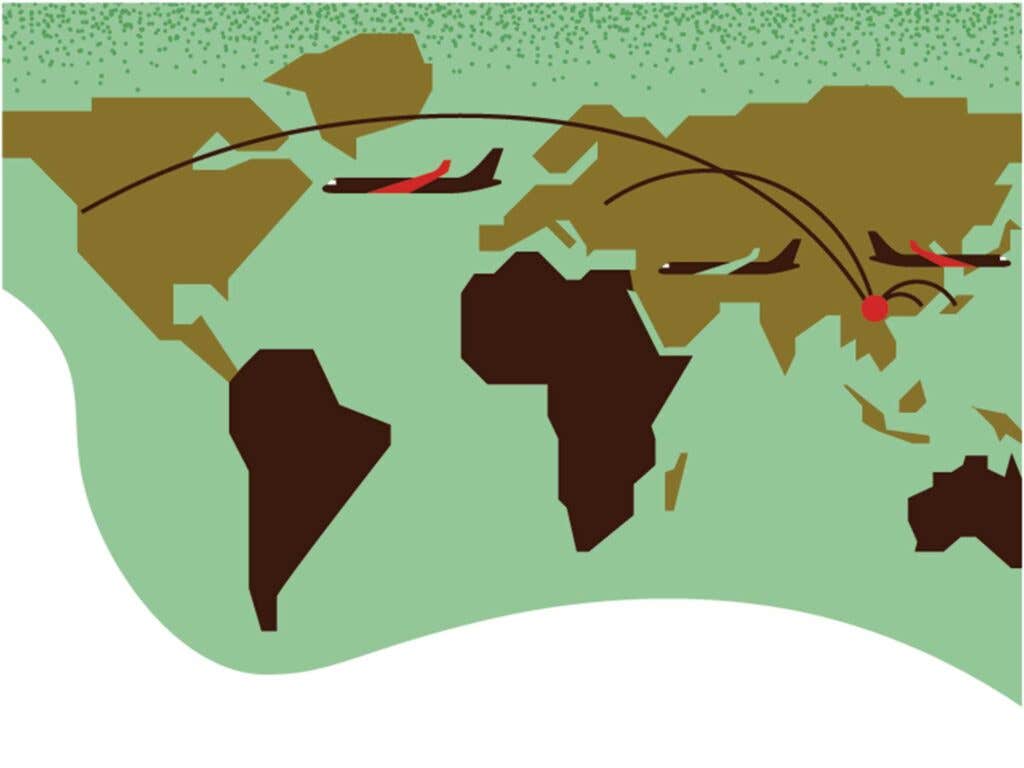
Now the tea is ready for its journey across the world for drinking or aging. A pu-erh's storage climate influences how it ages: A cake stored for 10 years in Hong Kong will taste different from one in Seattle. Naturally, pu-erh nerds obsess about where and how their tea was stored as much as how it was grown.
Keep Reading
Continue to Next Story
